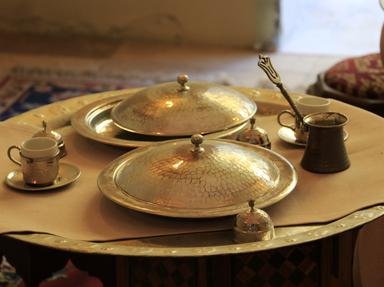Quiz Answer Key and Fun Facts
1. When corn was first introduced into Europe, many Spaniards quite seriously worried that, by eating this plant, it would result in what?
2. Farmers in Africa and Asia plant chilies around their food crops to keep which marauding animal at bay?
3. When American hot dogs are described as having traditional "natural casing", what does this mean?
4. You won't believe this. What does Casu Marzu, a traditional Sardinian cheese, contain?
5. Fanning is the term used for the tea used in most teabags. By what other term is fanning also known?
6. Cysteine, which is an additive added to many commercially made food products, is manufactured industrially from which animal product?
7. Dolley Madison, wife of the 4th President of the USA, supposedly really enjoyed which unlikely flavoured ice cream?
8. Milt, or soft roe, as it is also known, comes from which part of a fish?
9. Castoreum is another additive in many commercially made food products. From where, on the Canada and European beaver, is this obtained?
10. Why was Australia's popular spread, Vegemite, banned from prisons in the state of Victoria in the 1990s?
Source: Author
Creedy
This quiz was reviewed by FunTrivia editor
WesleyCrusher before going online.
Any errors found in FunTrivia content are routinely corrected through our feedback system.


